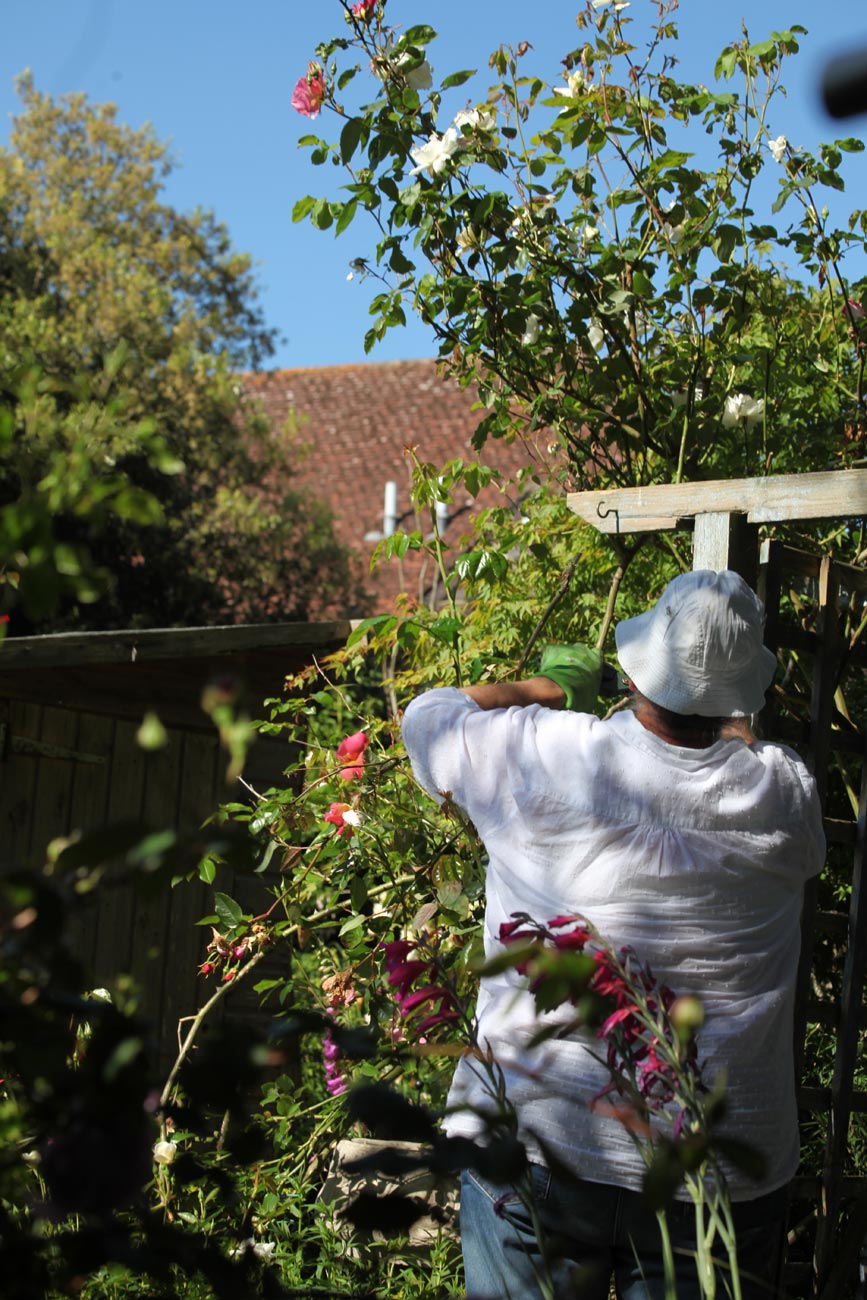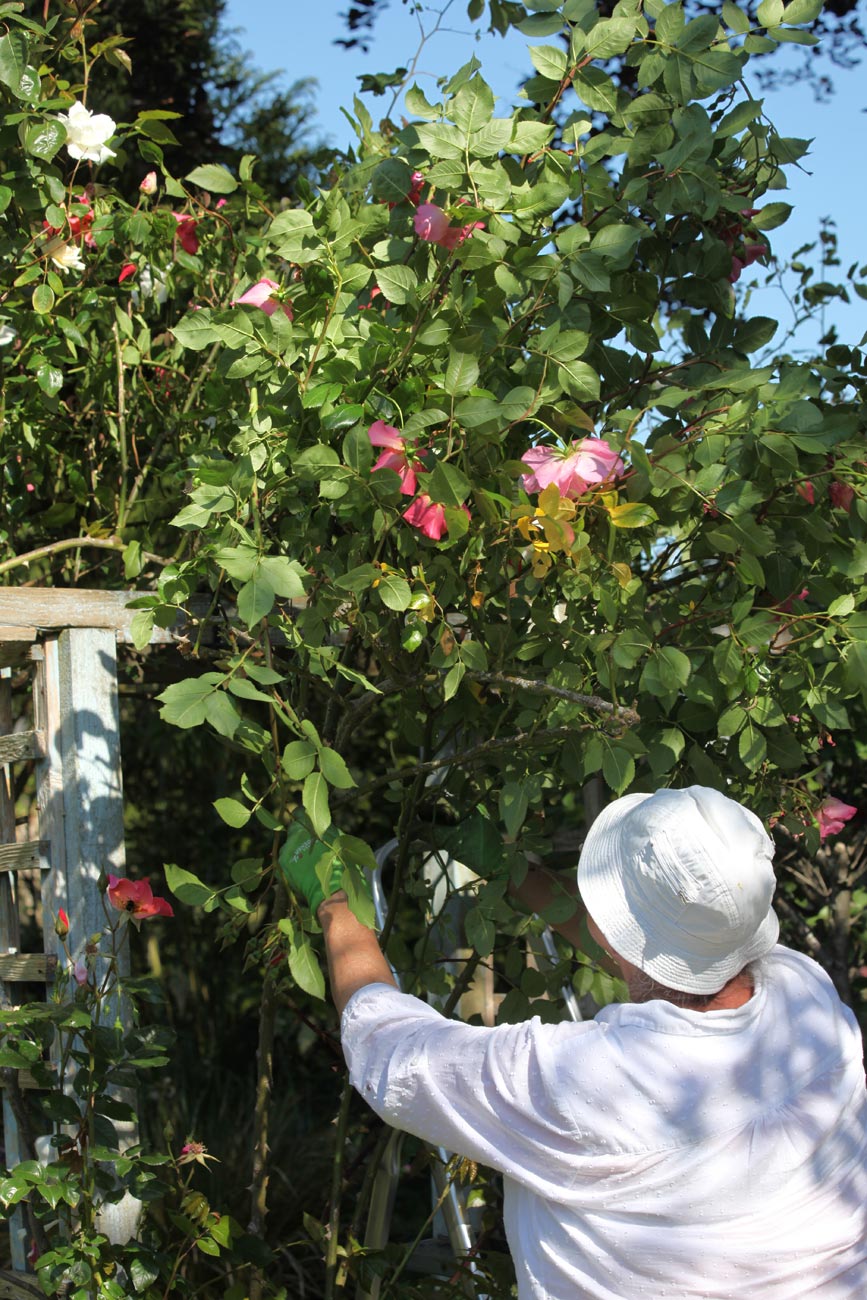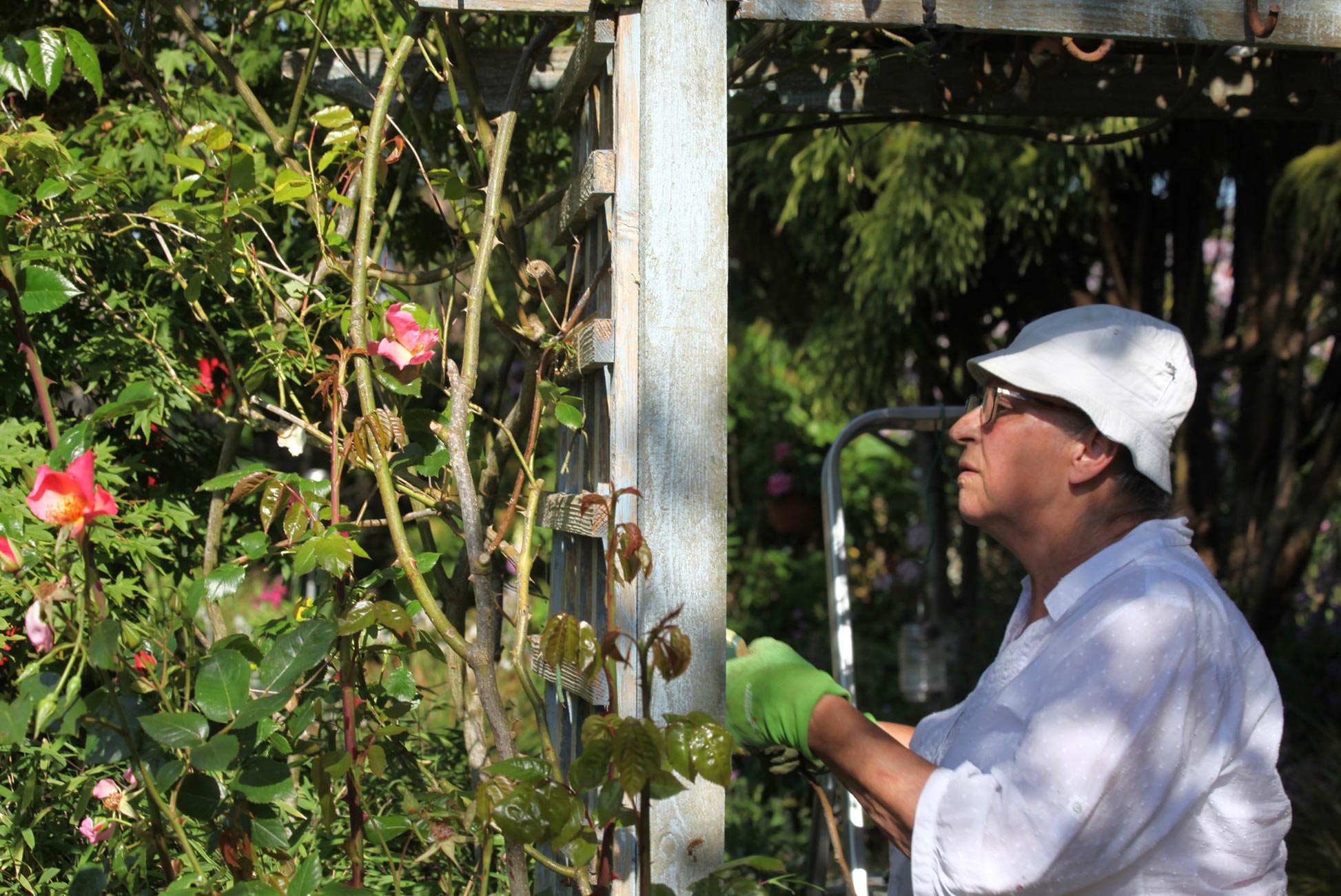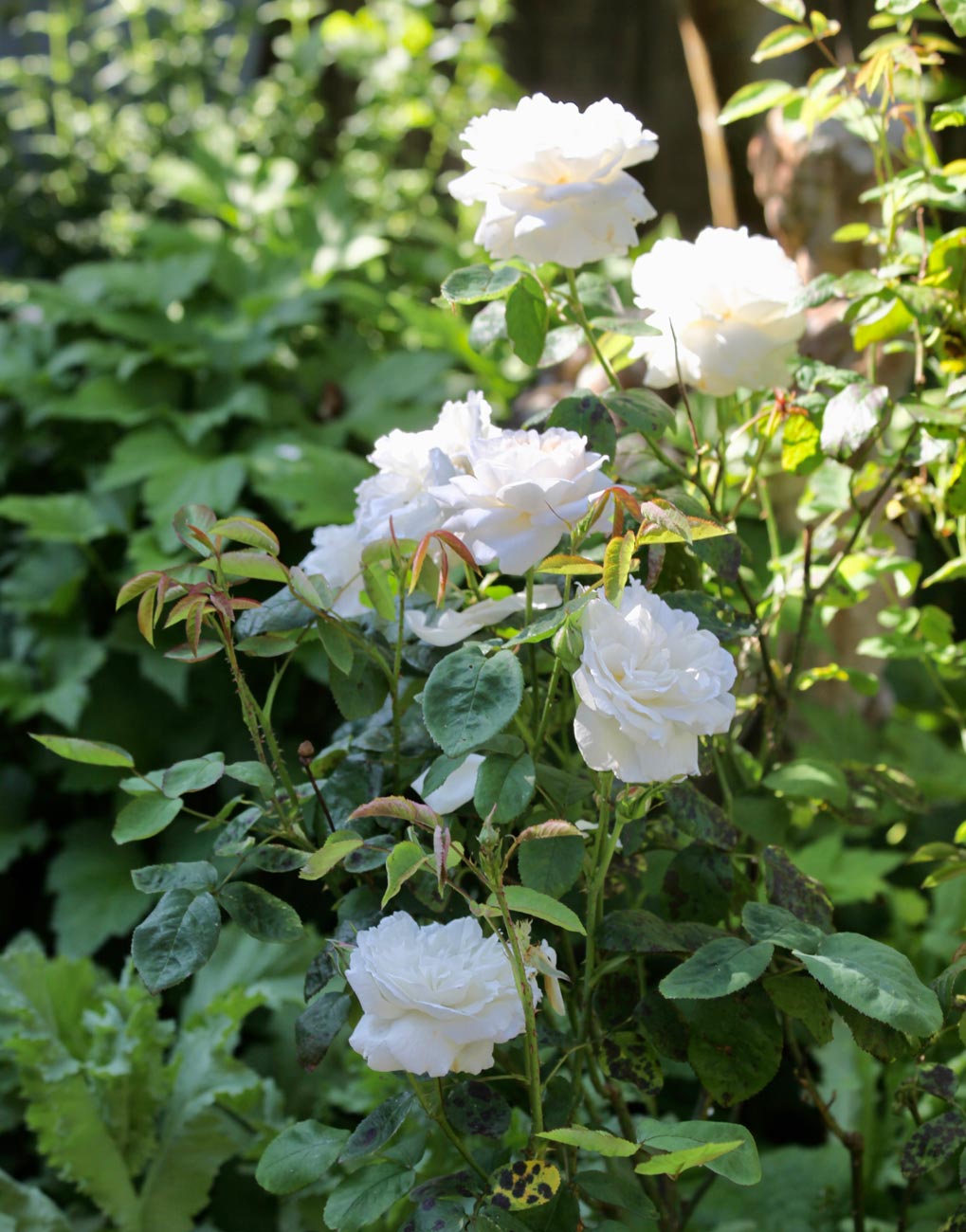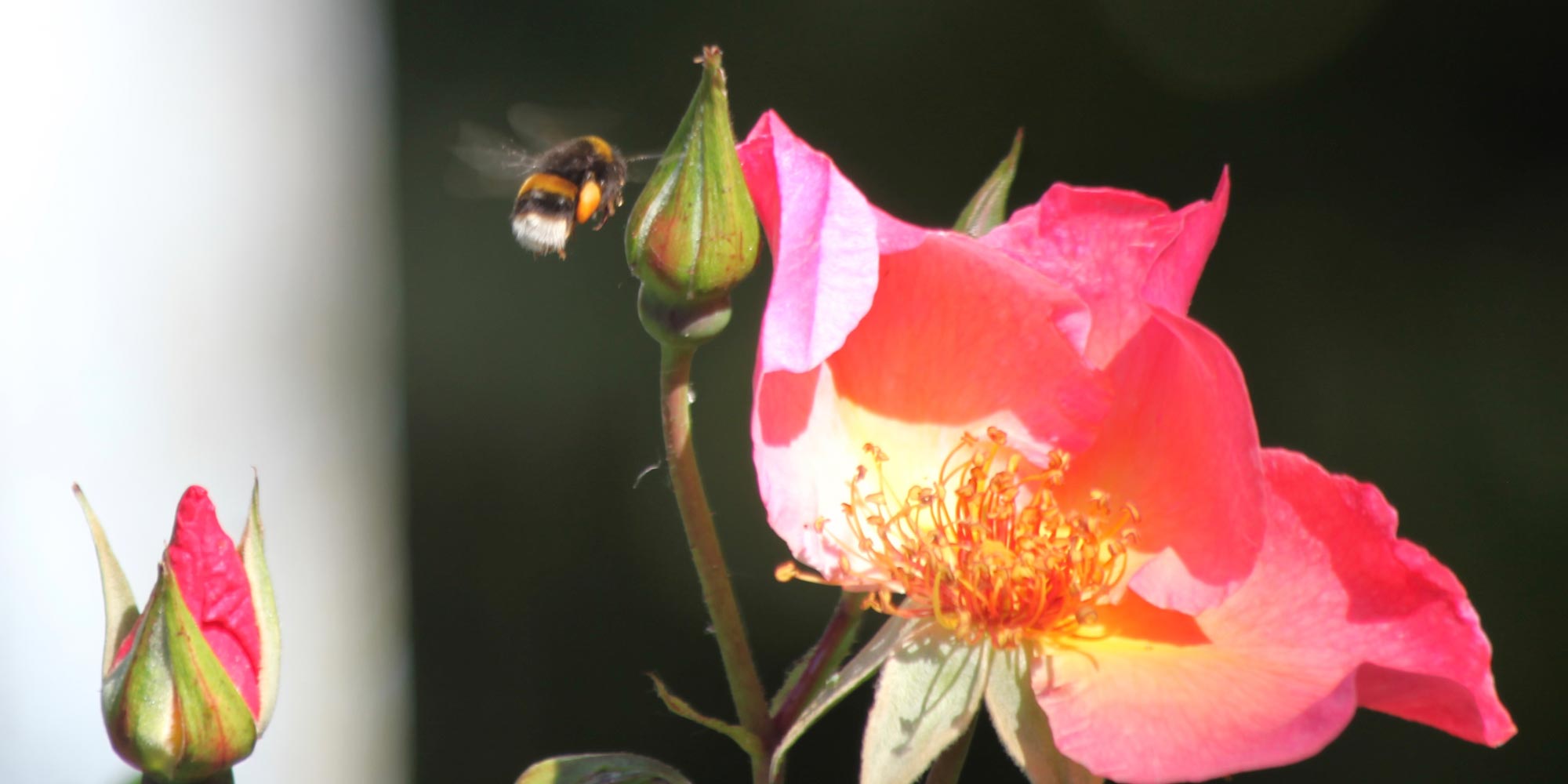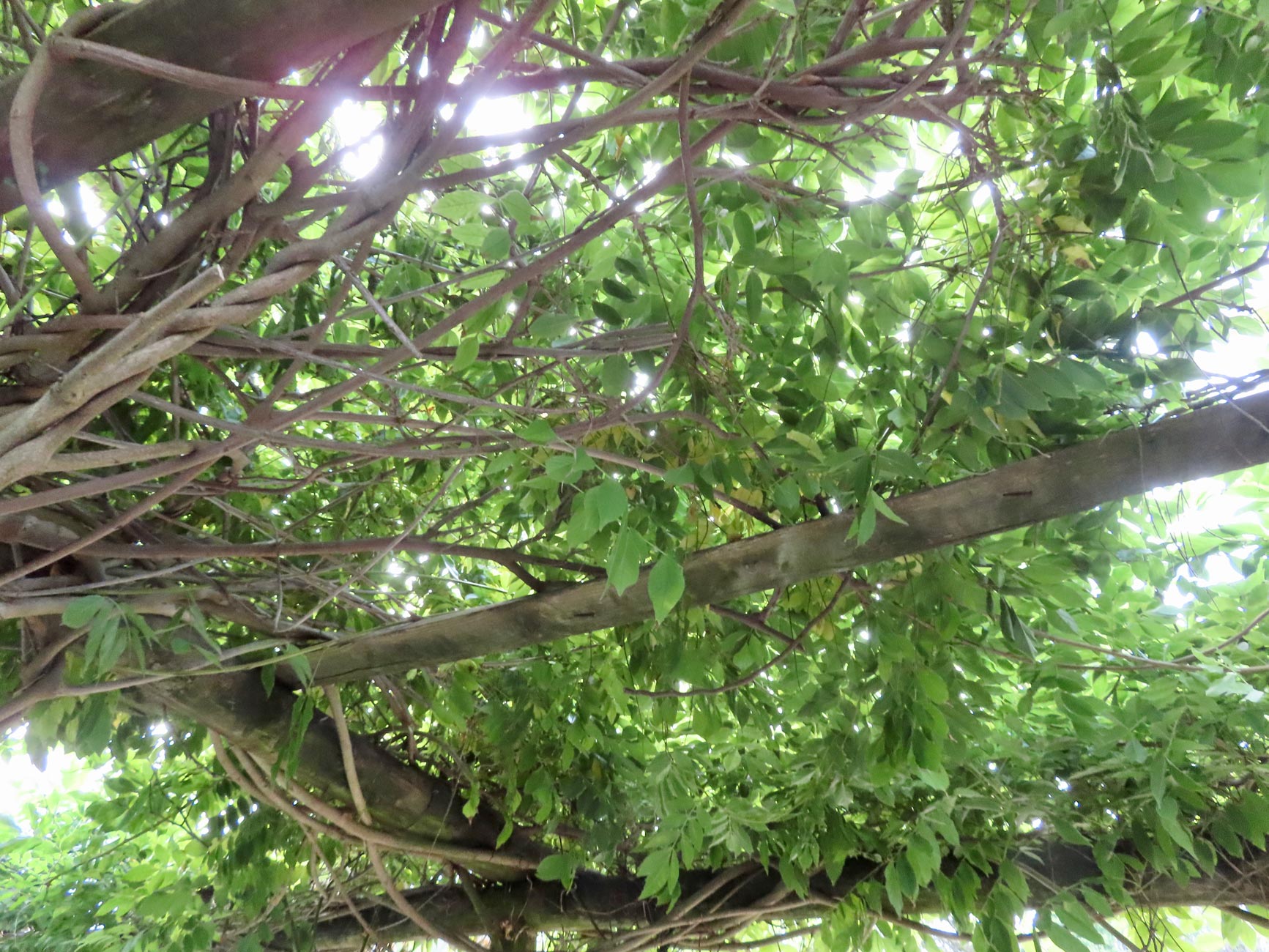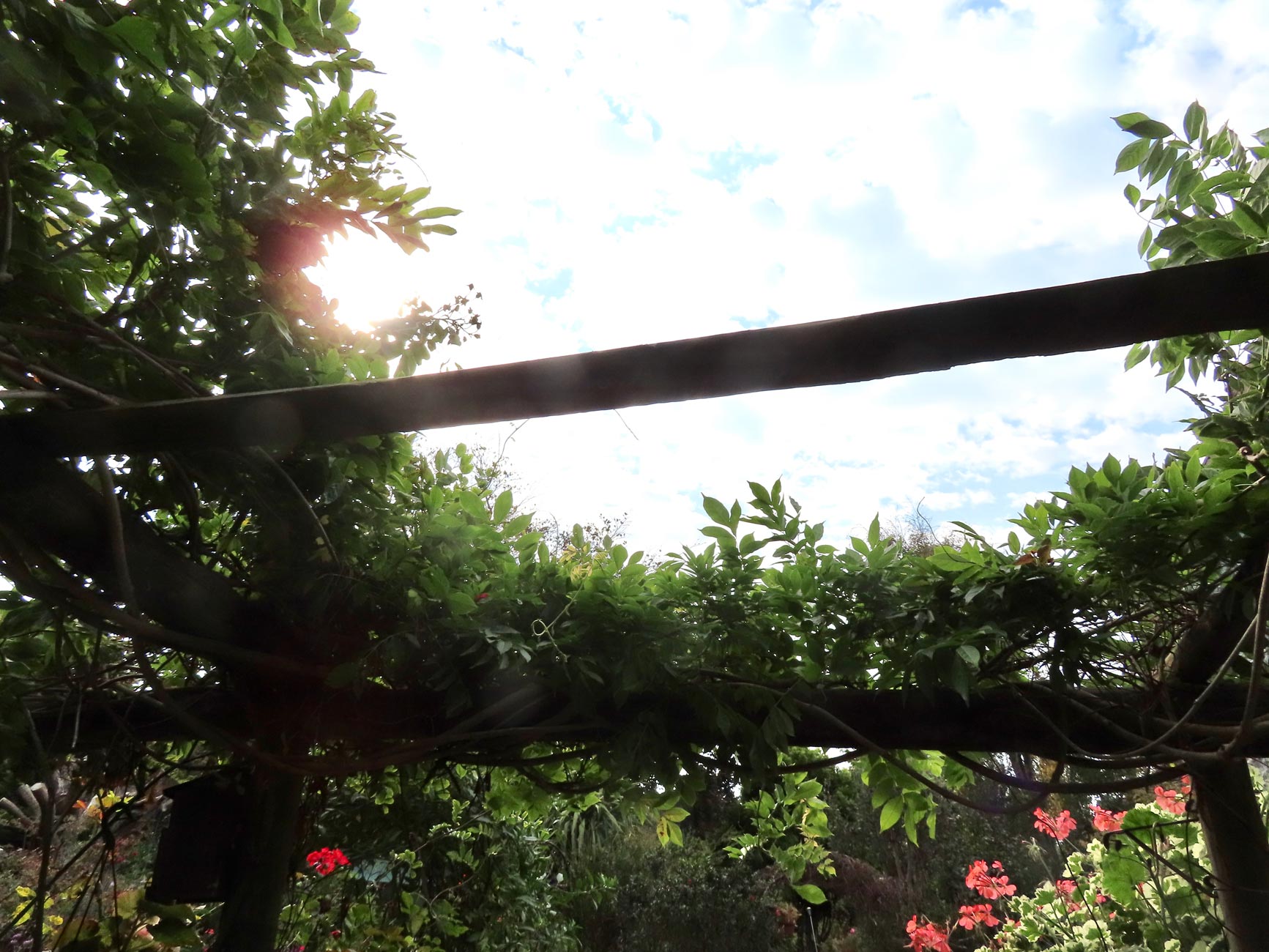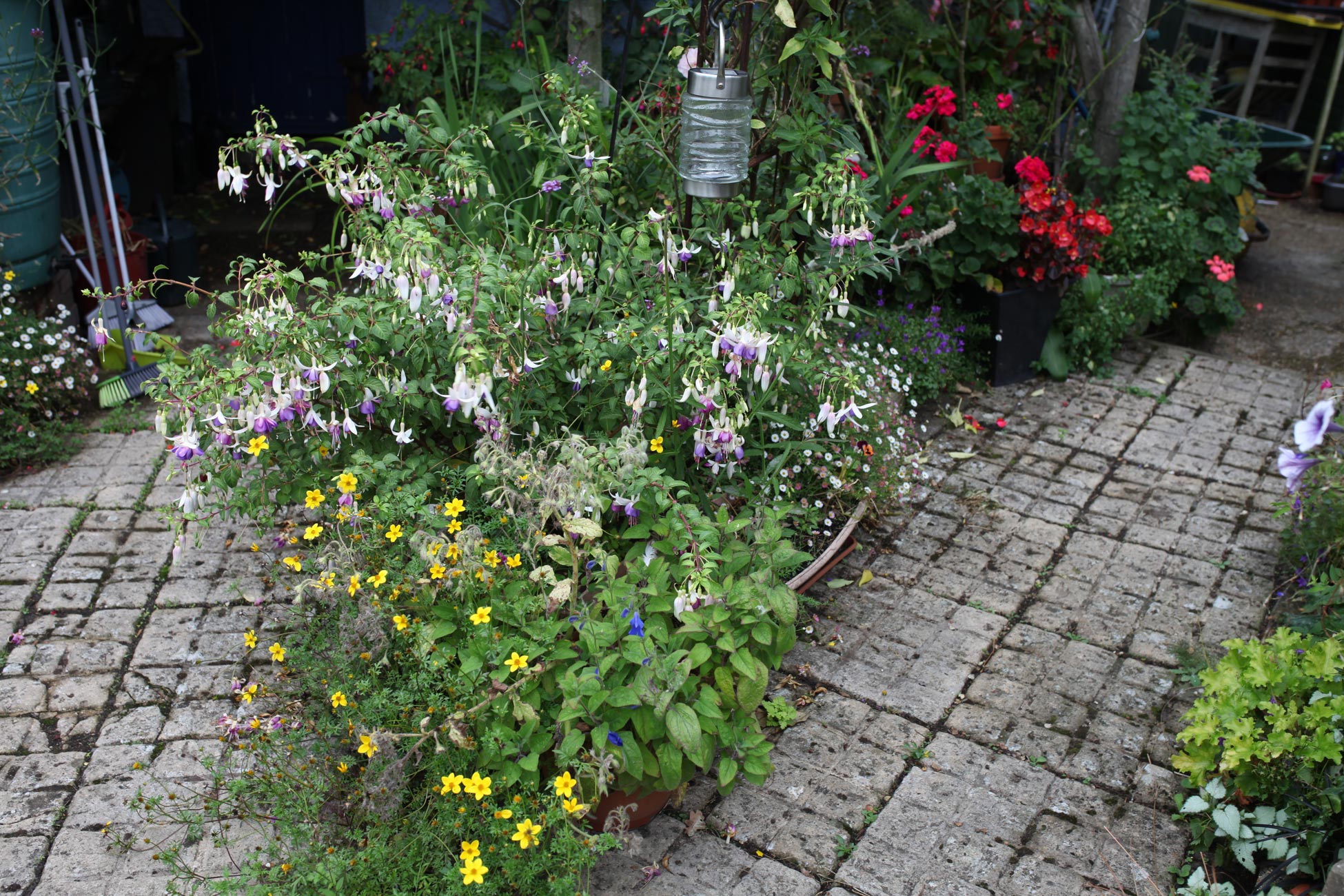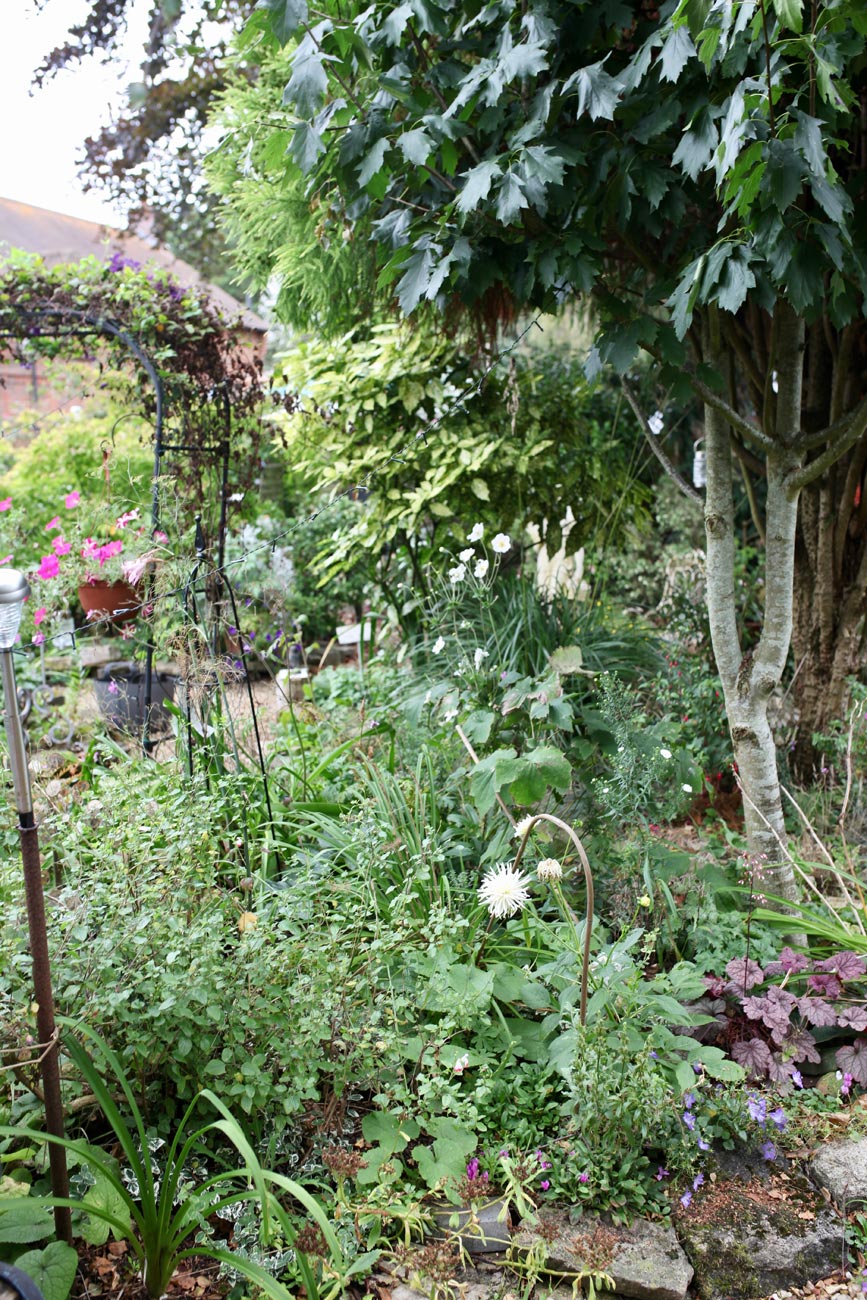Whenever the phone lines and consequently the internet goes down in our neck of the woods the culprit is often an overgrown tree. This causes us to keep an eye on the proximity to the overhead cables of our two crab apples in the front garden.
This is why Martin began work on his fortnightly gardening session on this balmy early autumn morning with
pruning the tops of these trees. The third of these pictures is “Where’s Martin? (2)”
It was not long before he reported on an infestation of woolly aphids which required much more surgery on one of the trees.
The next few paragraphs are extracts from https://www.rhs.org.uk/biodiversity/woolly-aphid
‘What is woolly aphid?
Woolly aphid is black aphid that sucks sap from woody stems of apple, cotoneaster and pyracantha and covers itself in a white waxy secretion.
Aphids are sap-sucking true bugs and are an important part of many food chains, supporting many predators. They range in size from 1 to 7mm (¼in or less) long. Some aphids are known as greenfly or blackfly, but there are species that are yellow, pink, white or mottled. There are more than 500 aphid species in Britain. Some feed on only one or two plant species, but others can be found on a wide range of plant hosts. Almost any plant can be a host to aphids, including ornamentals, vegetables, fruits, greenhouse plants and houseplants.
Symptoms
Woolly aphid is usually easy to spot;
- Between spring and early autumn, affected parts of the trunk and branches are covered with a fluffy white waxy material. This is secreted by the blackish brown aphids
- The thinner bark around old pruning cuts is a prime site for woolly aphid colonies in spring but by mid-summer the insect spreads to younger shoots
- Affected shoots usually develop soft, lumpy growths in the bark as a result of woolly aphid feeding. Such shoots are easily spotted during winter pruning. The swellings can split in frosty weather and create entry wounds for the fungal disease known as apple canker
- Woolly aphid is only found on apple, cotoneaster and pyracantha on other plants the white waxy deposits could be signs of other insects including scale insects, woolly beech aphid or in glasshouses mealybug
Control
Check susceptible plants frequently from spring onwards so action can be taken before a damaging population has developed. Little can be done to deal with aphids on tall trees as treatment is only likely to be successful if the entire plant can be reached. When choosing management options you can minimise harm to non-target animals by starting with the methods in the non-pesticide control section and avoiding pesticides. Within pesticides the shorter persistence products (that are usually certified for organic growing) are likely to be less damaging to non-target wildlife than those with longer persistence and/or systemic action. Pesticide treatments are likely to kill natural enemies and are only likely to be successful if the entire plant can be reached.
Non-pesticide control
- On small trees with light populations, it is possible to control woolly aphid by scrubbing the aphid colonies with a stiff-bristled brush. This is best done in spring or early summer before an extensive population has built up
- Where possible tolerate populations of aphids, they form an important part of many food chains and can be part of a healthy garden ecosystem
- Encourage aphid predators in the garden. Woolly aphid has a number of natural enemies which help to keep it in check, although they are rarely effective enough to prevent damage occurring. They are eaten by some ladybirds, lacewings and hoverfly larvae, and they are also attacked by a parasitoid wasp called Aphelinus mali. The parasitoid wasp can sometimes be found in gardens, particularly those where little pesticide spraying is done. It is fairly easy to recognise the parasite’s presence, as parasitised aphids stop producing wax and become black. A circular hole can sometimes be seen in the aphid’s upper surface where the adult parasitoid wasp has emerged. If the parasitoid is found, it can be encouraged by limiting the use of pesticides
- Research indicates that earwigs on fruit trees can reduce aphid numbers and on fruit trees they do not cause damage. Providing shelters such as flower pots loosely stuffed with hay in trees can help increase numbers
Biology
Woolly aphid overwinters on its host plants as nymphs that hide in cracks in the bark or in crevices around old feeding areas. During the winter months the aphids do not produce the waxy material that gives them the characteristic woolly coating in spring and summer.
In spring, the aphids become active again, mainly around old pruning cuts or other places on the trunk or larger branches where the bark is thinner. They begin sucking sap from beneath the bark, and start secreting the fluffy ‘wool’.
Populations reach a peak in mid- to late summer, when the aphids spread onto the younger shoots. Chemicals secreted into the plant as the aphids feed induce lumpy growths in the bark, especially on the younger shoots.
In mid-summer, winged forms of the aphid develop and these will fly off in search of new host plants.’ (https://www.rhs.org.uk/biodiversity/woolly-aphid)
One of Jackie’s earliest memories was of her grandfather standing under an apple tree in his garden with a matchbox. Her job was to point out the individual creatures which he untruthfully said he couldn’t see very well; he would then burn them off with a lighted match.
Martin needed to decimate the affected tree.
He cleared the refuse and transported it to the Back Drive at the far end of the garden, and still managed to mow the lawn.
This evening we are taking Dillon, Flo, and Ellie for a meal at the Fleur-de-Lys. Because I cannot publish any more new pictures on current posts until my WordPress site has been fully hosted by Peacock Computers I recommend viewing this earlier post https://derrickjknight.com/2018/08/03/fleur-de-lys/ of our first visit to this 11th Century Pub.





























